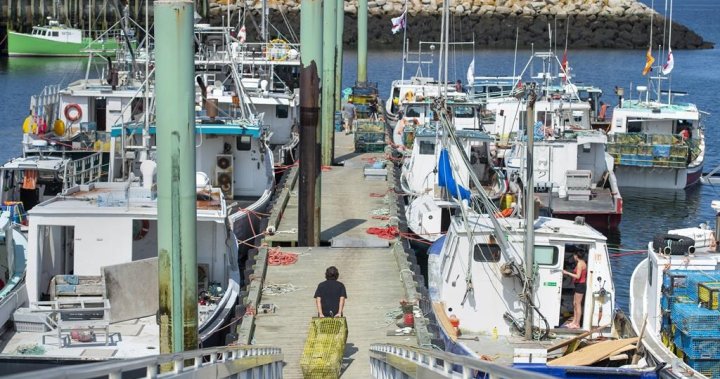This Canadian Press article reports on the ongoing legal battle and mediation efforts surrounding the fishing rights of the Sipekne’katik First Nation in Nova Scotia. The central issue revolves around the band’s assertion of their treaty-based right to a “moderate livelihood” fishery, which they maintain is supported by a 1999 Supreme Court of Canada decision. However, this practice has sparked contention with non-Indigenous commercial fishers who argue that the band’s off-season fishing activities pose a threat to lobster stocks and disregard the federal government’s regulatory authority, also affirmed by the Supreme Court.
The article highlights a potentially significant development in the protracted dispute. Ronald Pink, the lawyer representing Sipekne’katik First Nation, informed the Nova Scotia Supreme Court that mediation efforts with the federal government are nearing completion. This suggests that a settlement could be within reach, potentially resolving the longstanding conflict over Indigenous fishing rights and resource management. The legal proceedings, initiated by the band to challenge federal fishing regulations they deem an infringement on their treaty rights, have been temporarily suspended to facilitate these final negotiations.
While the anticipated settlement offers a glimmer of hope for resolving the complex issue, the article also acknowledges the uncertainty surrounding the potential agreement. The Unified Fisheries Conservation Alliance, representing commercial fishers intervening in the case, expressed concerns about the lack of clarity regarding the deal’s implications. They urged the court to maintain the litigation schedule to ensure the matter progresses even if the mediation fails to yield a satisfactory outcome. Justice John Keith, presiding over the case, granted a six-month extension for the parties to finalize their discussions, setting a firm deadline of June 16, 2025, for the legal proceedings to resume if a resolution is not reached by then.
The Sipekne’katik First Nation’s claim to a moderate livelihood fishery stems from the 1999 Supreme Court decision in the Marshall case, which affirmed their treaty right to fish for a moderate livelihood. This ruling, however, also recognized the federal government’s power to regulate the fishery for conservation and other valid objectives. The core of the ongoing dispute lies in the interpretation and implementation of these seemingly conflicting principles. The Sipekne’katik maintain that their fishing activities are consistent with their treaty rights and fall within the scope of a moderate livelihood. Commercial fishers, on the other hand, argue that the band’s fishing practices outside the regulated season undermine conservation efforts and create an unfair advantage.
The potential settlement being negotiated could address several key aspects of the dispute. It might define the scope and parameters of the Sipekne’katik’s moderate livelihood fishery, including catch limits, fishing seasons, and designated fishing areas. The agreement could also outline mechanisms for co-management and collaboration between the band and the federal government in managing the lobster fishery. Furthermore, it could address concerns about conservation and sustainability by incorporating measures to ensure the long-term health of lobster stocks.
The outcome of the mediation process holds significant implications for both Indigenous fishing rights and the broader relationship between Indigenous communities and the Canadian government. A successful settlement would not only resolve the immediate dispute but could also serve as a precedent for addressing similar conflicts across the country. It could provide a framework for recognizing and implementing Indigenous treaty rights while balancing conservation and resource management objectives. However, a failure to reach an agreement could prolong the legal battle and further exacerbate tensions between Indigenous and non-Indigenous fishers.
The court’s decision to grant a six-month extension for negotiations demonstrates a willingness to prioritize dialogue and settlement over protracted litigation. This approach reflects a growing recognition of the importance of reconciliation and finding mutually acceptable solutions to address historical grievances. The deadline imposed by the court, however, also underscores the need for the parties to engage in good-faith negotiations and strive to reach a timely resolution. The coming months will be crucial in determining whether the mediation process can successfully bridge the divide and bring an end to this longstanding fishing dispute. The outcome will undoubtedly have a profound impact on the future of Indigenous fishing rights and resource management in Canada. The hope remains that a mutually acceptable agreement can be reached, one that respects both Indigenous treaty rights and the principles of sustainable resource management.










